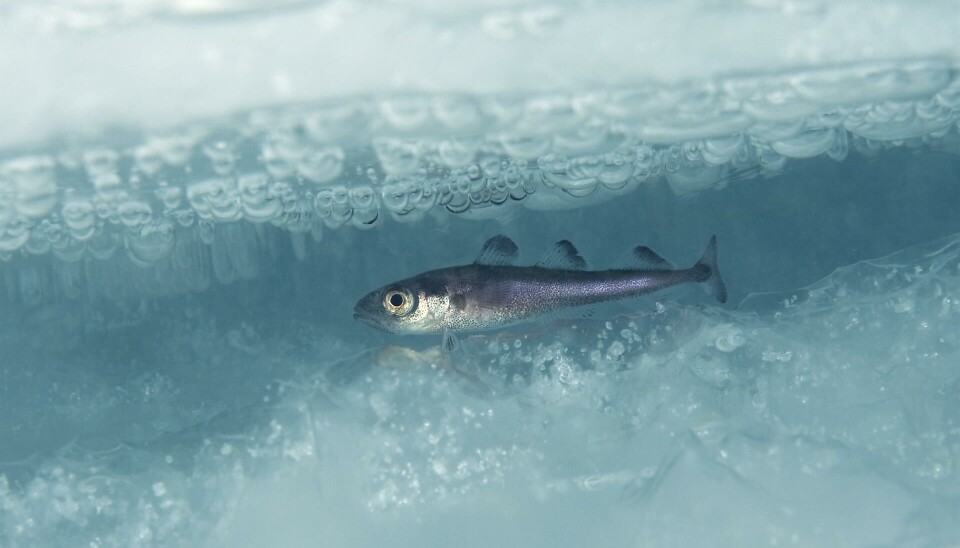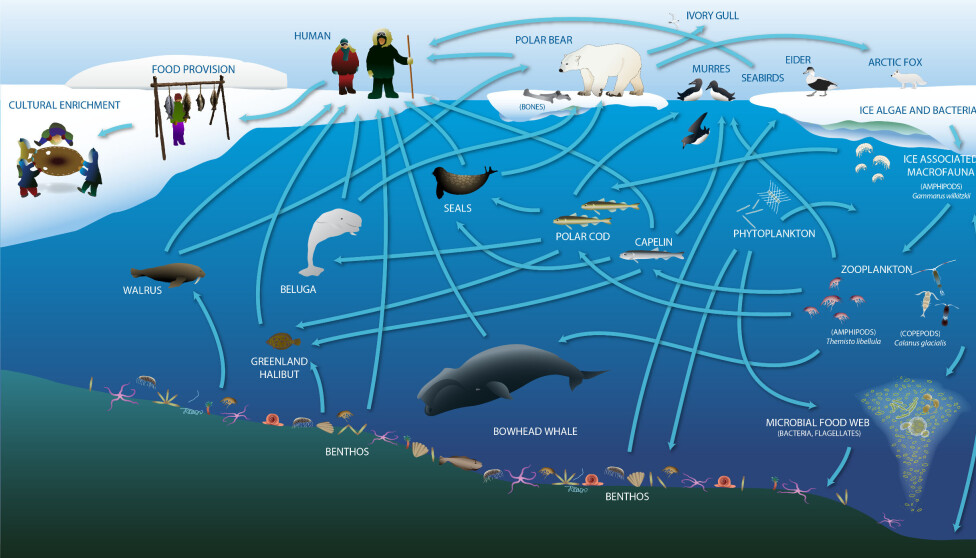Researchers' Zone:

No polar cod – no polar bears?
At the great Arctic show, polar bears, belugas and narwhals are the uncontested stars, but in the backstage, a huge team of small fish make it all possible.
Polar cod for breakfast?
‘Of course, also for lunch, dinner and snacks!’ would be your answer if you were an animal living in the Arctic Ocean.
Many iconic Arctic animals are directly linked to polar cod. For example, narwhals, belugas and ringed seals, rely heavily on polar cod to ingest the energy and fat necessary to survive in cold Arctic waters.
And as polar bears eat mainly ringed seals, they also depend on polar cod indirectly.
In other words: If you care about polar bears, you should care about polar cod.
The sardine of the North
Polar cod (which scientific name is Boreogadus saida and Greenlandic name is eqalugaq) are found all around the Arctic.
It is a forage fish, which means a small, energy-rich fish that serve a key ecosystem role as prey for larger fish, marine mammals, and seabirds.
So we could say it’s the sardine of the North.
Its ecological role is more related to sardines than to its well-known cousin the Atlantic cod, which is a top predator. But polar cod is very vulnerable to climate change.
Warming oceans and disappearing sea ice are affecting polar cod physiology, ecology and survival in many ways.
For these reasons, scientists have in recent years had an increased interest in polar cod.
Greenland is a highly relevant place to study polar cod. First, because many species preying on polar cod are economically and culturally important in Greenland, hence a decline in polar cod populations will have important societal implications.
Second, because it comprises regions where polar cod are struggling to survive and regions where they seem to be doing well for now.

Co-producing knowledge
Now polar cod is the star of a new research project entitled ‘Eqalugaq - Co-producing knowledge on polar cod in Greenland’ funded by the Arctic Environmental Support Program of the Danish Environmental Agency.
The inter-disciplinary project covers a broad range of subjects and methods. Over the next two years, a team of fifteen researchers from Greenland, Denmark and Canada will, in collaboration with communities in different parts of Greenland, use traditional knowledge and natural sciences to tackle key questions about polar cod around Greenland.
For example, we want to provide information on the abundance and distribution of polar cod around Greenland, and to determine if these have changed over the last decades.
We also want to study how polar cod is linked with its environment and how important it is for seabirds and marine mammals.
How will it cascade in the ecosystem?
To answer our questions we will for example interview knowledge holders such as fishers and hunters, sample fish with trawl nets, use sonar technology and analyze the stomach content of birds and marine mammals.
We will also use video recordings of seabirds bringing food to their nest, to determine the importance of polar cod in the chicks’ diet.
By bridging different knowledge systems and drawing upon all relevant sources of information, we will certainly get closer in our quest to anticipate how future changes
in polar cod populations will cascade in the ecosystem.
So no polar cod, no polar bears – really?
Of course, it is not that straightforward. Polar bears can eat other prey than ringed seals and ringed seals can eat other prey than polar cod. But in both cases, this is by far their favorite meals, the kind that one never gets tired of eating again, and again, and again.
This article was originally published on our danish sistersite, Forskerzonen.
List of references:
- Caroline Bouchard’s profile.
- 'Arctic gadids in a rapidly changing environment', Polar Biol (2020), DOI: 10.1007/s00300-020-02696-1
- 'West Greenland ichthyoplankton and how melting glaciers could allow Arctic cod larvae to survive extreme summer temperatures', Arctic Science (2020), DOI: 10.1139/as-2020-0019
- 'Resource partitioning may limit interspecific competition among Arctic fish species during early life', Elementa: Science of the Anthropocene (2022), DOI: 10.1525/elementa.2021.00038.





